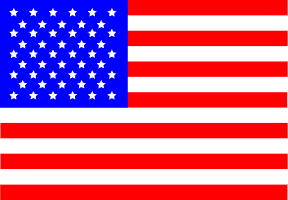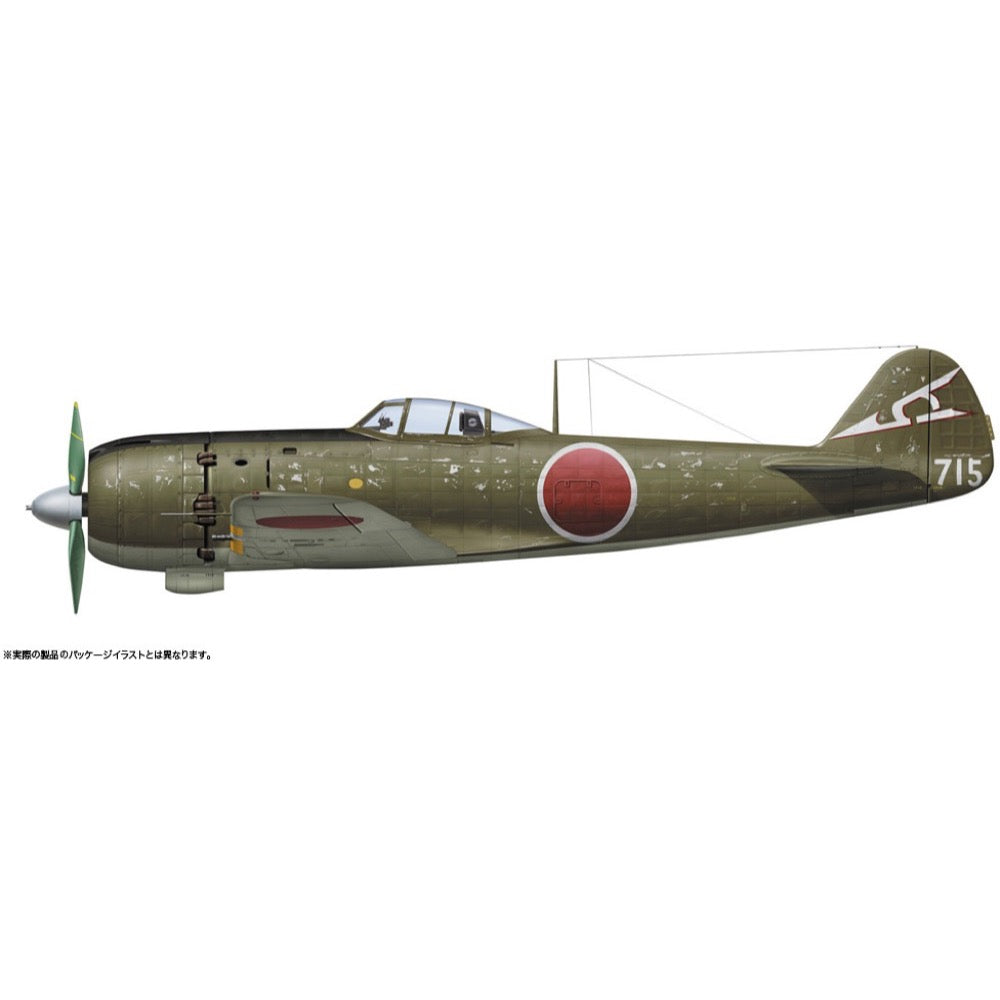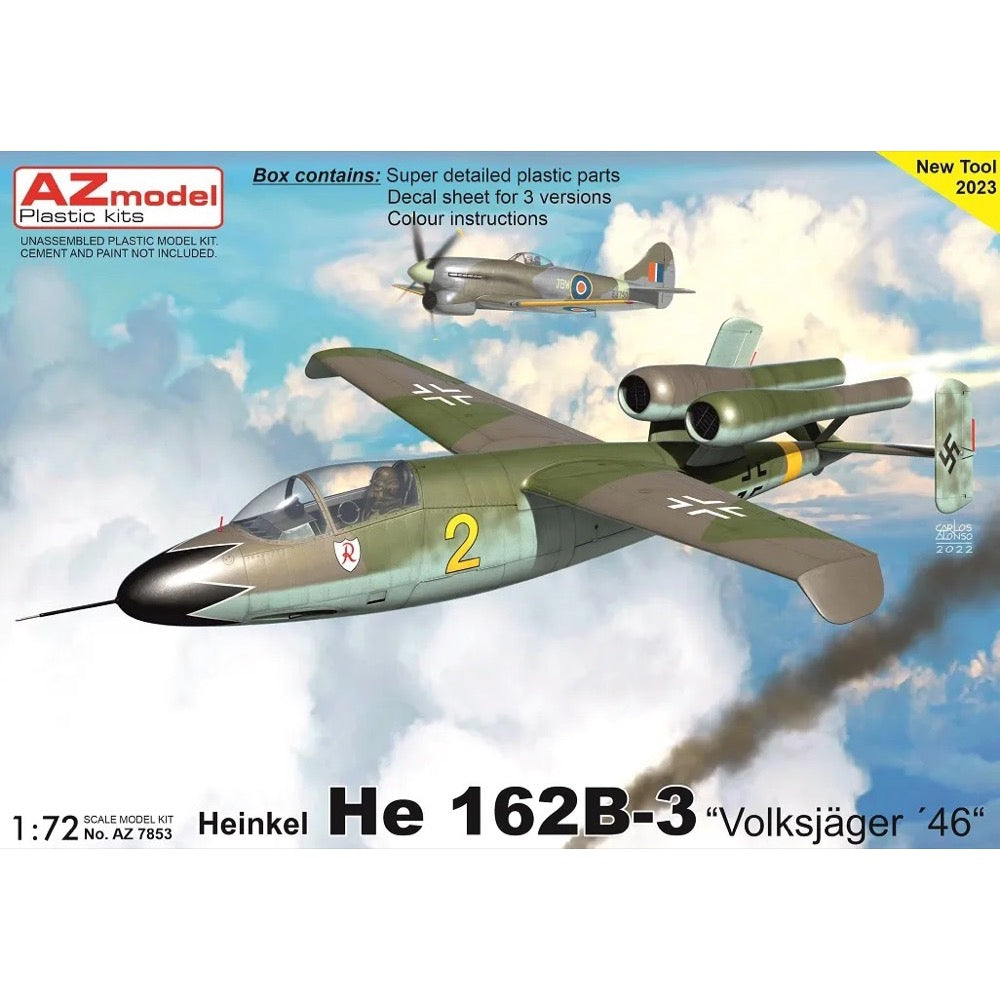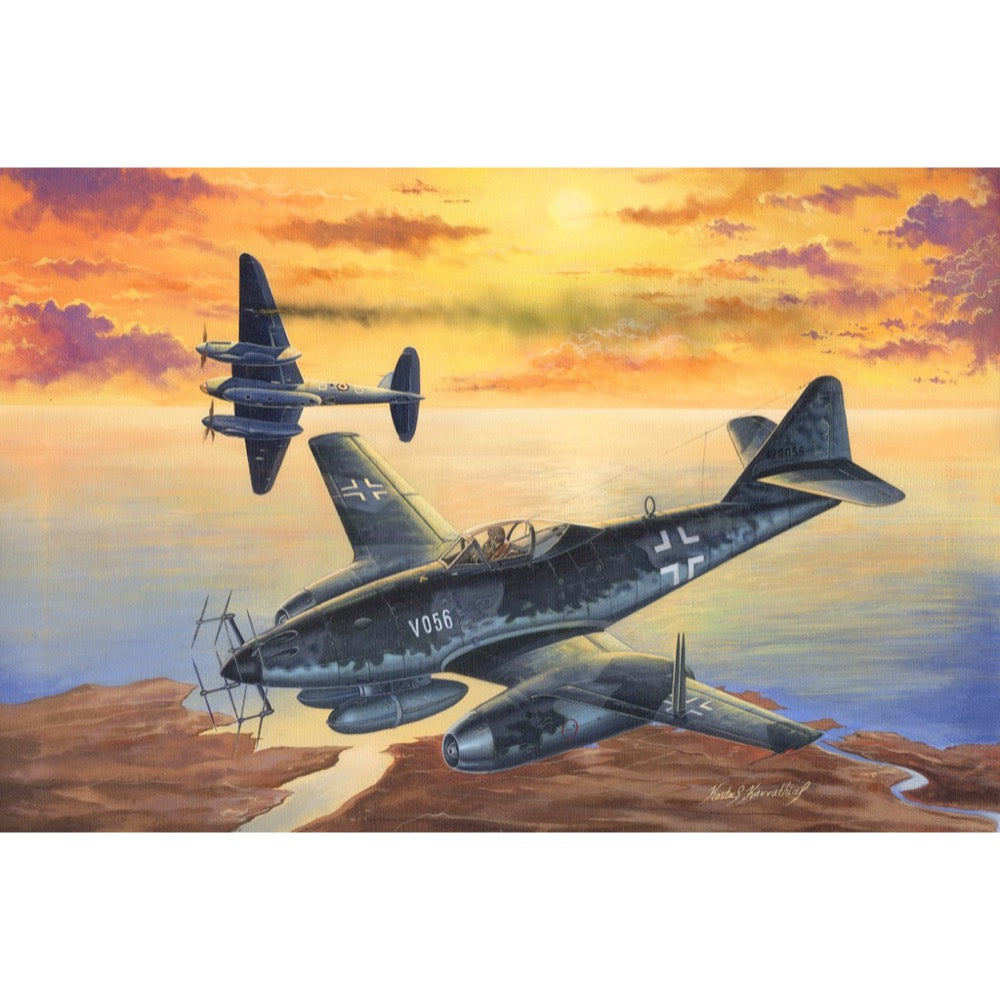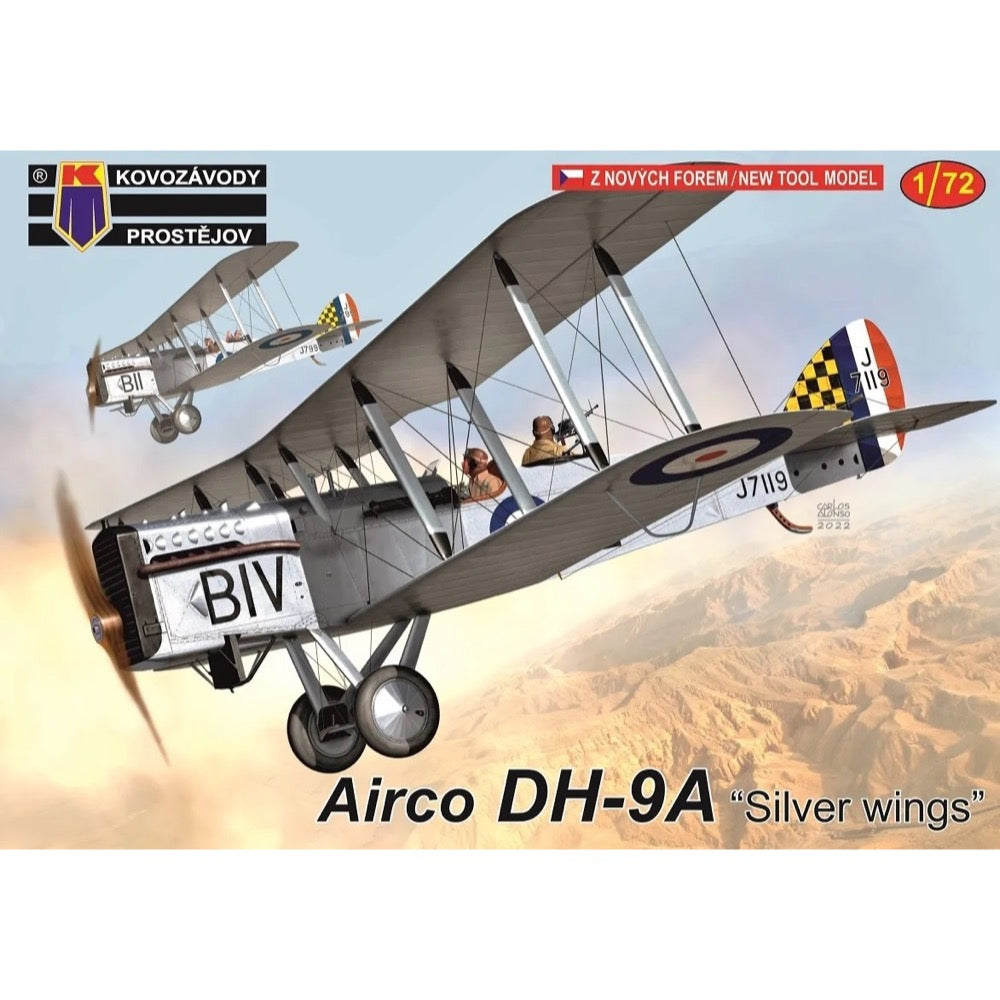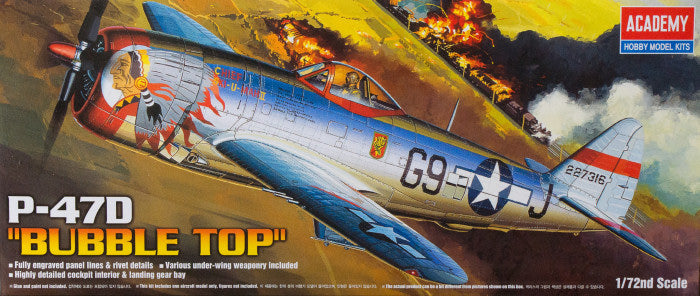
Academy 12491 1/72 P-47D "Bubble-Top" Thunderbolt
10.00
$
<p>The Republic P-47 Thunderbolt is an American, single-engine fighter and fighter-attack aircraft, built in a low wing configuration with a classic tail. Considered one of the best American fighters of World War II. The flight of the prototype took place in 1941, and serial production continued in the years 1942-1945. The P-47 can be described as the workhorse of the US Air Force in both Europe and the Pacific. Although the 2000HP R-2800 Double Wasp engine, turbine and exhaust system made the plane very large and heavy, it was not a barrier to achieving great performance. The usefulness of the machine was so great that it was used both for bomber escorts and for bombing missions with the P-47 in the lead role. The P-47 class is evidenced by the sheer number of aircraft produced. There were 15660 of them, and as many as 12602 in the D specification, which is an absolute record when it comes to the number of fighters produced in one version. Another common version was the P-47N, with changed wings, larger fuel tanks, and a more powerful engine. It was used both as a fighter and an assault machine. Even after World War II, the Thunderbolt was one of the most popular American fighters until the early 1950s. Technical data (P-47D version): length: 11m, wingspan: 12.42m, height: 4.47m, maximum speed: 697km / h, rate of climb: 15.9m / s, maximum range: 2900km, practical ceiling: 13,100m, armament: fixed - 8 12.7mm M2 machine guns, suspended - up to 1100 kg of bombs or unguided missiles.</p>
<p>This is an injection-plastic jet aircraft model kit.</p>
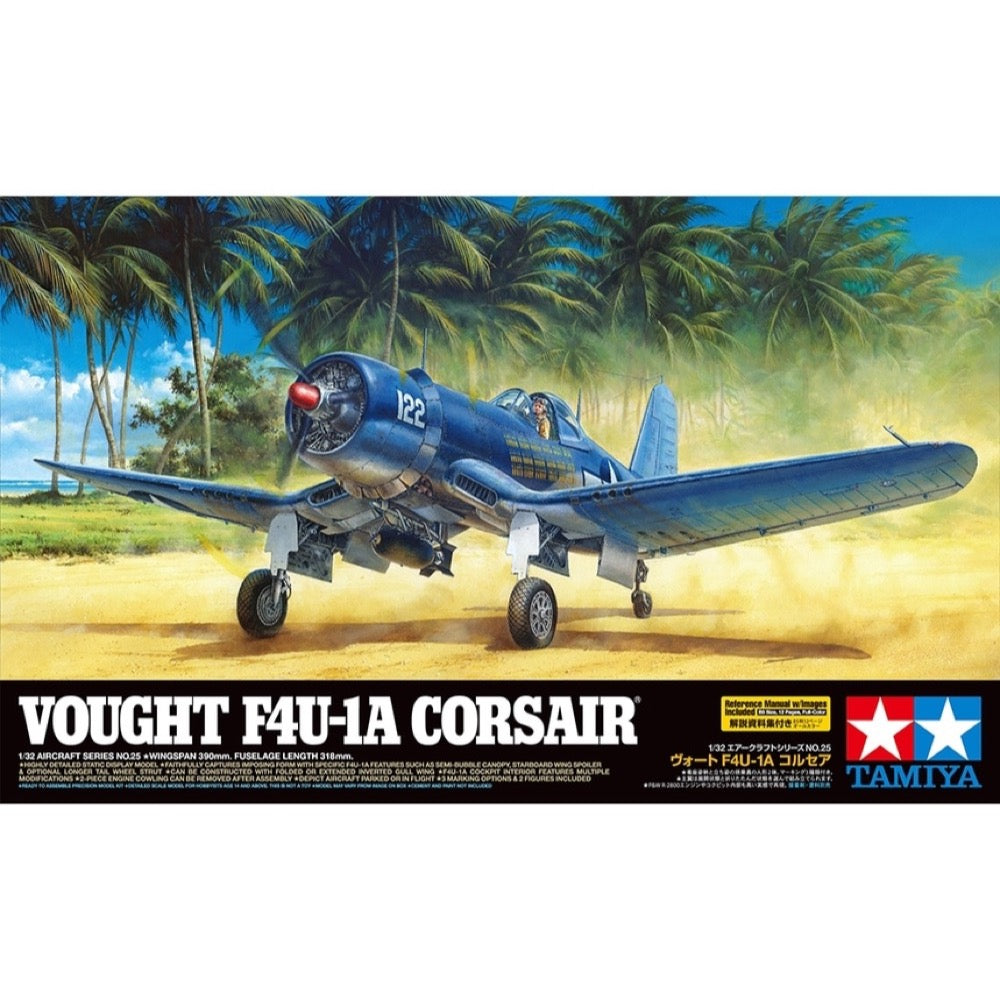
Tamiya 60325 1/32 Vought F4U-1A Corsair
83.00
$
<h3>A Big Step on the Path to Greatness</h3>
<p>With a highly complex P&W R-2800 engine generating 2,000hp, a 4-meter propeller and striking gull wings, the Corsair was certainly a memorable aircraft; it was effective, too, and was one of the mainstays of the U.S. Navy. The F4U-1A variant was assigned to units from Summer 1943, and featured upgrades such as a semi-bubble canopy (to improve previously limited visibility), plus the ability to carry bombs of up to 1,000lb. It saw a large amount of action in fighting with the Japanese Navy around the Solomon Islands; the Corsair continued to serve through the Korean War in the guise of further variants, the bomber capability pioneered by the F4U-1A proving a most effective addition to the aircraft's inherent ability.</p>
<h3>Features</h3>
<ul>
<li>
<p>This is a 1/32 scale plastic model assembly kit of the F4U-1A Corsair.</p>
</li>
<li>
<p>Fuselage length: 318mm, wingspan: 390mm.</p>
</li>
<li>
<p>Features specific to the F4U-1A such as the semi-bubble canopy, starboard leading edge spoiler and extended tail wheel strut are captured with accuracy.</p>
</li>
<li>
<p>The model accurately reflects the new F4U-1A seat position and accompanying changes in the cockpit.</p>
</li>
<li>
<p>Assemble with flaps and elevators in up or down position as per your preference.</p>
</li>
<li>
<p>2-piece engine cowling can be removed after assembly to allow appreciation of the breathtaking engine recreation.</p>
</li>
<li>
<p>Aircraft can be assembled in parked or airborne state.</p>
</li>
<li>
<p>3 included marking options recreate U.S. Navy and U.S. Marine Corps units.</p>
</li>
</ul>
<p> </p>
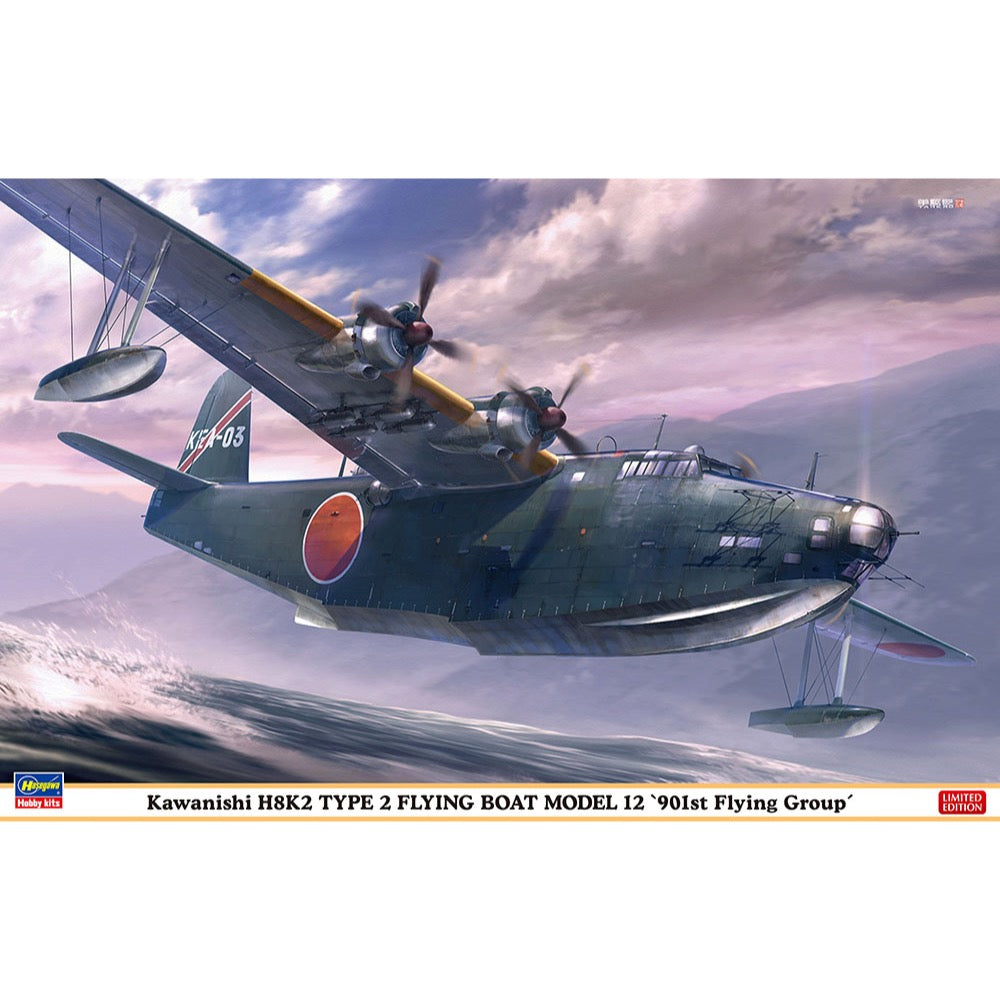
Hasegawa 02473 1/72 Kawanishi H8K2 Type 2 Flying Boat Model 12 901st Flying Group
43.00
$
<h3>A replica of the Type 2 Type 12 flying boat belonging to the 901st Naval Air Group .</h3>
<p>The Kawanishi H8K2 Type 2 Large Flying Boat Type 12 belonged to the 901st Naval Air Squadron; new decals are included for the 901st Naval Air Corps aircraft KEA0-03 from Mainland China in 1944, with bonus decals for KEA-62 and KEA-85. The package illustration is by Dankuro Kato.</p>
<p>The package illustration is by Kato Tankuro.</p>
<h3>Decals (markings)</h3>
<ul>
<li>901st Naval Air Squadron belonging machine "KEA-03" (Mainland China 1944)<br>
</li>
<li>Bonus: "KEA-62", "KEA-85"</li>
</ul>

Special Hobby 1/48 Fokker B.II serie 03.6
23.00
$
<p>The Fokker D.II is a German biplane fighter designed and put into service in 1916. The Fokker D.II was characterized by a mixed structure: wood and canvas, with the hull formed by a metal frame covered with linen. It was a German response to the Allied Nieuport 11 machines. It was powered by a 100HP Oberursel UI rotary engine.</p>
<p>The Special Hobby 1/48 Fokker B.ll Seriee 03/6 is a highly detailed model kit that accurately replicates the iconic World War I aircraft. With its precise molding and intricate parts, this kit offers a rewarding building experience for hobbyists of all skill levels.</p>
<h3>Features</h3>
<ul>
<li>Scale: 1/48</li>
<li>Skill level: Intermediate</li>
<li>Detailed cockpit and engine</li>
<li>Authentic decals included</li>
<li>Suitable for diorama displays</li>
<li>High-quality plastic construction</li>
<li>Ideal for history enthusiasts and model collectors.</li>
</ul>

Hasegawa 02465 1/72 F-35 Lightning II (A Version) J.A.S.D.F. 301SQ 50th Anniversary
15.00
$
<h3>F-35® LIGHTNING II® (A Version) “J.A.S.D.F. 301SQ 50th ANNIVERSARY”</h3>
<p>This model kit from Hasegawa reproduces the special 50th anniversary paint scheme for the Japan Air Self-Defense Force 3rd Wing, 301st Squadron! The squadron's frog emblem is reproduced in an assertive size on the tail. Decals are included for aircraft 701, Misawa Base, November 2023. </p>
<p><strong>Markings</strong></p>
<p>J.A.S.D.F. 3rd AW 301st SQ 50 years anniv. special marking Code: 701(69-8701) Misawa A.B. Nov.,2023</p>
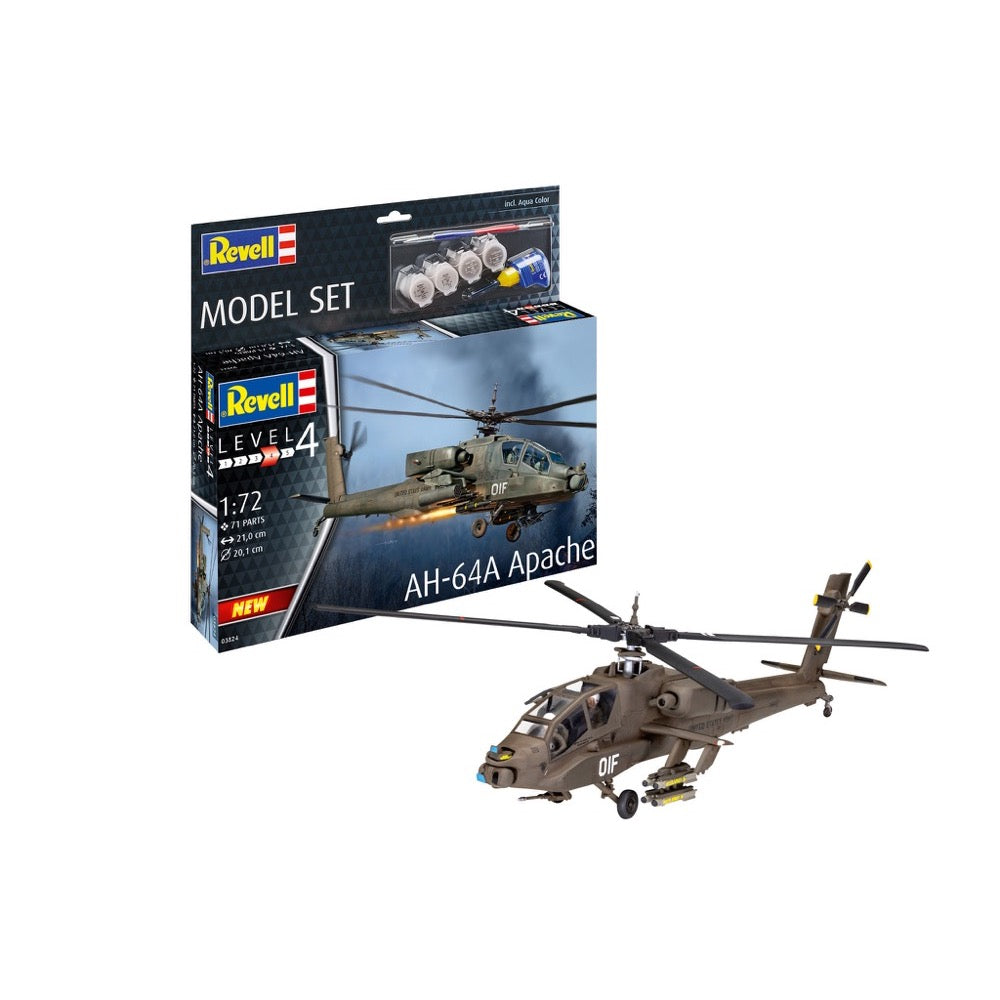
Revell 63824 1/144 AH-64A Apache Starter Set
28.00
$
<p>The AH-64A Apache heavy twin-engine attack helicopter was developed by Hughes Aircraft and produced by Boeing. The Apache is mainly used by the US Army. The development of the AH-64A was strongly linked to the requirements and circumstances of the Vietnam War.</p>
<p>In addition to basic colors, glue and brushes are also included.</p>
<h3>Includes</h3>
<ul>
<li>Plastic model kit (unassembled)</li>
<li>Illustrated, multilingual assembly instructions</li>
<li>decals</li>
<li>Basic colors (Revell Aqua Color)</li>
<li>Adhesive (Revell Contacta Professional Mini)</li>
<li>Paint brush</li>
</ul>
<h3>Specification</h3>
<ul>
<li>Scale:1:72</li>
<li>Age recommendation:12+</li>
<li>Number of parts: 79</li>
<li>Length: 123mm</li>
<li>Broad: 40mm</li>
<li>Height: 29mm</li>
</ul>
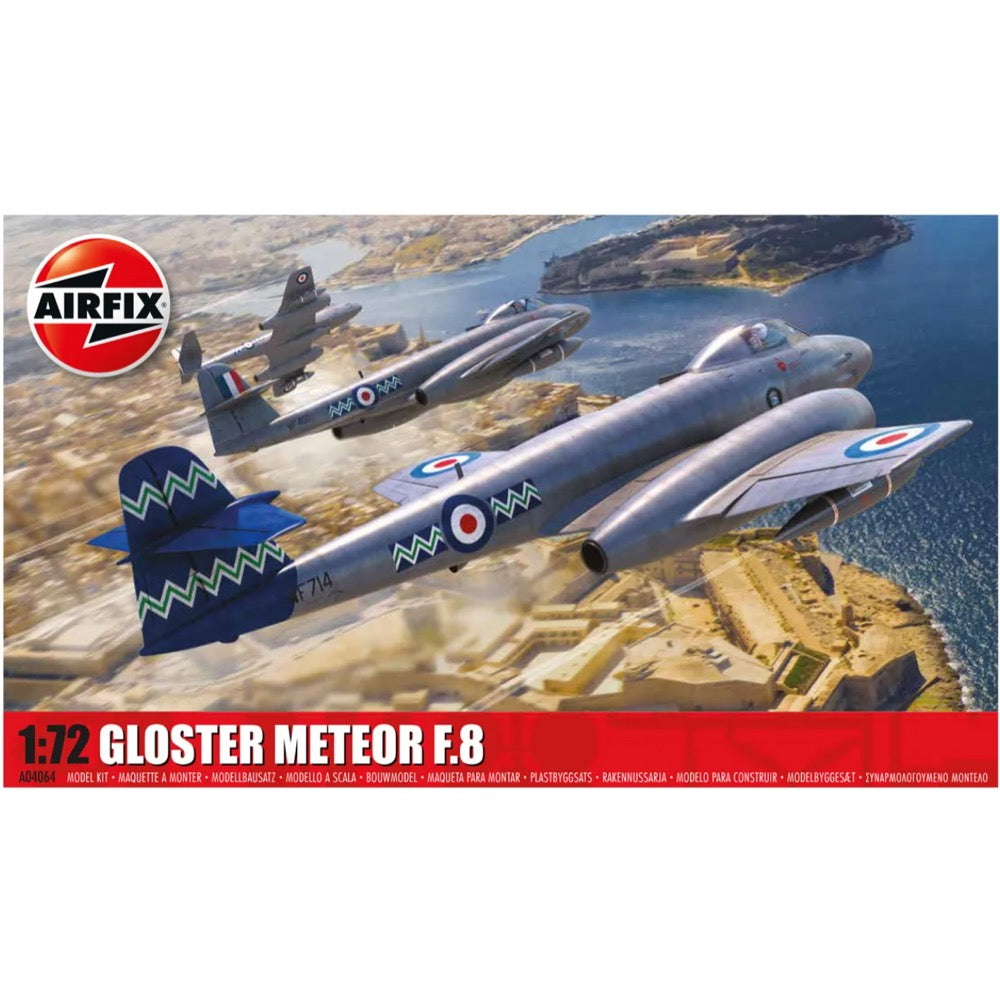
Airfix A04064 1/72 Gloster Meteor F.8
19.00
$
<h3>Gloster Meteor F.8</h3>
<p>The Gloster Meteor was the first jet-powered aircraft to appear in the skies over Europe towards the end of WWII. Post-war, the Meteor had to evolve rapidly to keep pace with the rest of the world as jet power became the standard means of propulsion for frontline fighters, this led to the F.8 variant.</p>
<ul>
<li>NEW TOOLING</li>
<li>1:72 Scale</li>
<li>Wingspan: 158mm</li>
</ul>
<p>As the world watched in awe as the first jet powered aircraft appeared in the skies over Europe towards the end of WWII, capable of attaining speeds over 100 mph faster than the latest piston engined fighters, it is interesting to note that development work on jet propulsion actually started in the 1930s, with engineers in both Britain and Germany searching for the next generation of engine power. Indeed, the first flight of a turbojet powered aircraft actually took place just days before the outbreak of the Second World War, however, conflict would necessitate the production of thousands of aircraft powered by existing piston technology, so jet powered advancement proved to be relatively slow. In Britain, brilliant engineer Frank Whittle produced a viable turbojet engine and when the powerplant was installed in the Gloster E28/39 Pioneer for its first flight on 15th May 1941, it became the first British jet powered aircraft to fly - the race was now on to produce the first jet fighter for the Royal Air Force.</p>
<p>Conducted under the strictest security, the Gloster Aircraft Company prepared their new twin engined jet fighter for flight testing, but on test flight days, all non-essential personnel would be dismissed from the airfield and local police would close the surrounding roads to stop prying eyes discovering this closely guarded aviation secret. If anyone did catch a glimpse of this strange new aircraft in the air, they would have no doubt wondered where the propellers were and why did it sound so strange? By the summer of 1944, the secret was out and as No.616 Squadron prepared to take the Gloster Meteor F.1 to war from its base at RAF Manston, the Royal Air Force had their first jet fighter and a new era for British aviation had begun.</p>
<p>Britain's first jet fighter was still quite a primitive design and the reason it proceeded as a twin engined aircraft was down to the fact that these early jet were not overly powerful and rather slow to respond to the pilot's power input requests, so the use of two engines seemed practical. The view from the cockpit was however superb, with no propeller to obscure the pilots view and plenty of power available once the aircraft was up to speed. Undergoing almost constant development, the early marks of Meteor were all based around the first aircraft to enter service, however, the service arrival of the F.8 variant in 1950 saw the Meteor maturing into a truly exceptional early jet, one which would not only see service with the RAF, but also with several other air arms across the world. Slightly longer than its predecessors, the F.8 featured uprated engines, greater fuel capacity and the inclusion of an ejector seat. To counter some instability issues discovered during development, the new aircraft also featured a redesigned tail unit, something which really serves to identify this later mark of Meteor.</p>
<p>For five years following the squadron introduction of the Meteor F.8, the aircraft formed the backbone of the RAF's fighter defence force, a jet powered equivalent to the Spitfire's which patrolled Britain's skies during the Battle of Britain just ten years earlier.</p>
<h4>Includes</h4>
<ul>
<li>Sprues</li>
<li>Decals</li>
</ul>
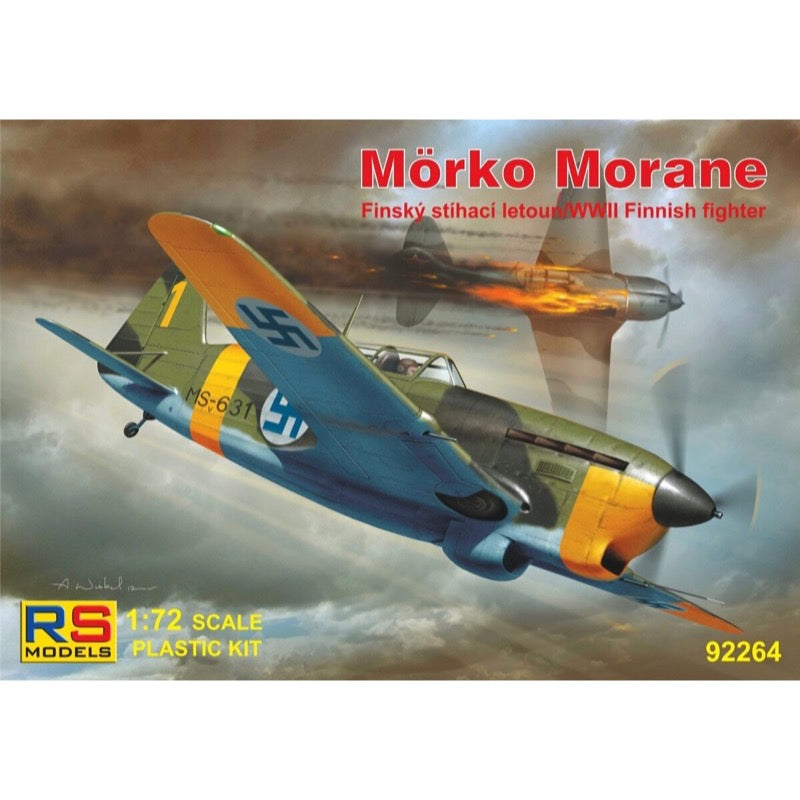
RS Models 92264 1/72 Morko Morane Finnish
13.00
$
<p>Morane-Saulnier MS.406 was a French single-engine fighter. At the time of the outbreak of war with Germany in 1939, the most numerous fighter was the French Armeé de l'Air. Although it was characterized by good handling and dexterity, its performance lagged significantly behind the Messerschmitt Bf-109E.</p>
<p>Compared to the Bf 109, Morane was underpowered, slow, underarmed, and lacked passive protection for important parts. During the so-called Strange War, the Morans still performed relatively well, but in the Battle of France their obsolescence became fully apparent. A more successful service awaited them in Switzerland and Finland, where improved variants were developed.</p>
<h3>3 decal variants</h3>
<ul>
<li>Mörkö Morane, of 1 / HLeLv 28, Värtsilä, August 1944, Finland</li>
<li>Mörkö Morane, HLeLv 21, Rissala March 1945, Finland</li>
<li>Mörkö Morane, HLeLv 21, Kesäkuu 1946, Finland</li>
</ul>

